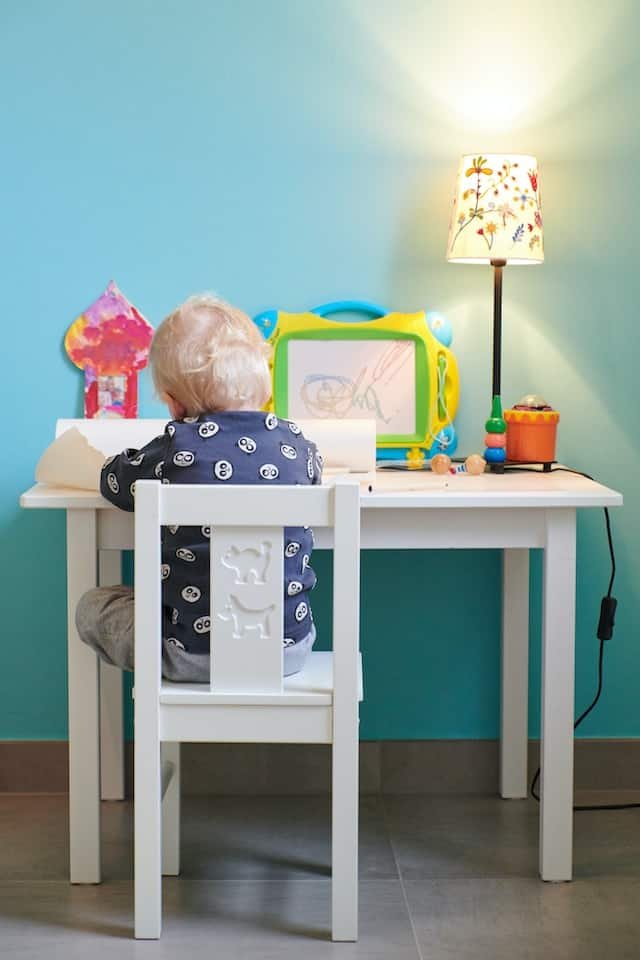
Disclaimer: As an Amazon Associate, “Furniture UK” earns from qualifying purchases.
Moving to a new home can be exciting, but packing your furniture can be tedious. So, let’s dive in! One of the biggest worries during a move is the possibility of your furniture getting damaged in transit. With proper planning and packing techniques, you can ensure your beloved furniture arrives at your new home in the same condition as it left your old one. In this article, we’ll guide you through some tips and tricks to help you pack your furniture safely and securely.
Assessing Your Furniture
Before packing your furniture, you must assess each piece to determine the best way to pack it. Here are some things to consider:
- Size and Weight – Large and heavy furniture pieces may require special equipment or additional help to move. Make sure you have the necessary resources before attempting to pack them.
- Material – The type of material your furniture is made of will determine the best way to protect it during the move. For example, wood furniture may require extra padding to prevent scratches, while leather furniture may need to be wrapped in a breathable material to prevent moisture buildup.
- Value – If you have valuable or antique furniture, you may want to consider hiring a professional moving company to handle the packing and transport. They will have the expertise and equipment to protect your items adequately.
- Disassembly – Some furniture pieces may need to be disassembled before packing to make them easier to transport. Make sure you have the necessary tools and instructions to do this properly.
Gathering Packing Supplies
Before you start packing your furniture, gathering all the necessary packing supplies is essential. Here are some of the basic packing supplies you’ll need:
- Moving blankets or thick blankets to wrap your furniture
- Bubble wrap for fragile items
- Packing tape to secure your furniture and boxes
- Stretch wrap to keep drawers and doors from opening during the move
- Corrugated cardboard sheets to protect corners and edges
- Resealable plastic bags for small parts and hardware
- Box cutter or scissors to cut packing materials
- Markers or labels to identify contents and room destinations

Measuring your furniture and doorways to ensure everything fits through is also a good idea. This will help you determine the size of boxes and packing materials you’ll need. Once you have all your packing supplies, you can start wrapping and securing your furniture. Taking the time to pack your furniture properly will help ensure that it arrives at your new home in great shape.
Disassembling Furniture
Disassembling furniture is an important step to take when preparing for a move. It makes transporting your furniture easier and minimizes the risk of damage during the move. Here are some steps to follow when disassembling your furniture:
- Start by downsizing your furniture. This means removing furniture you don’t need or won’t fit in your new home. It’s important to do this before you start disassembling your furniture.
- Remove any loose items from your furniture, such as cushions or pillows. These items should be packed separately.
- Remove the drawers from standalone furniture pieces to make them lighter and easier to transport. Pack those drawers separately.
- Label and bag any screws or small parts you remove from your furniture. This will make it easier to reassemble your furniture later.
- Use bubble wrap or moving blankets to protect any delicate parts of your furniture, such as glass or mirrors.
- Use the appropriate tools to disassemble your furniture. This may include screwdrivers, wrenches, hammers, and pliers.
Wrapping and Protecting Furniture
When packing your furniture for a move, taking the necessary precautions to protect it during the journey is essential. Here are some tips on how to wrap and protect your furniture:
- Use moving blankets or pads to protect your furniture from scratches, dents, and other damage. Wrap the blankets around the furniture and secure them with packing tape.
- Use bubble wrap or packing paper to protect fragile items such as glass tabletops or mirrors. Wrap the item several times and secure it with tape.
- For furniture with drawers, wrap each drawer separately with bubble wrap or packing paper. This will prevent the drawers from sliding out during the move.
- Use plastic wrap to secure the moving blankets or furniture pads in place. This will keep them from shifting during the move.
- If you have furniture with sharp corners, use corner protectors made of foam or cardboard to prevent damage to the corners during the move.
Packing Furniture for Transport
When packing furniture for a move, you should follow a few key steps to ensure everything arrives at your new home in one piece. Check out these 5 tips:
- Disassemble what you can: Taking apart your furniture can make it easier to pack and transport. Remove legs, shelves, and other detachable parts to make the furniture more compact.
- Protect corners and edges: Use cardboard or foam padding to protect the corners and edges of your furniture. This will help prevent scratches and dings during the move.
- Wrap everything: Use blankets, bubble wrap, or furniture pads to wrap your furniture. Make sure everything is completely covered to prevent damage during the move.
- Secure drawers and doors: Use tape or rope to secure any drawers or doors that could open during transport. This will prevent them from swinging open and potentially causing damage.
- Label everything: Make sure each piece of furniture has its contents and destination room. This will make it easier to unpack and set up your new home.
Loading Furniture onto the Removal Vans
When loading your furniture onto the removal vans, remember a few things. First, it’s important to load your heaviest items. This usually means furniture goes in before boxes unless you have large, heavy boxes that must go on the bottom.

Next, vertically place all couches, headboards, and tables upright to save space in your truck. Use furniture pads or blankets to wrap and protect your items before loading them onto the truck. This will also help prevent any damage to the furniture during the move. If you have any disassembled furniture, secure all the parts together and label them clearly. This will make it easier to reassemble your furniture at your new home. Additionally, if you have any fragile items, place them on top of your furniture to prevent them from getting crushed.
When loading your truck, it’s important to distribute the weight evenly throughout the vehicle. This will help prevent shifting during transit and ensure your belongings arrive at your new home safely. Use tie-downs or straps to secure your furniture and to avoid movement during the move.
Unloading and Reassembling Furniture
Once you have arrived at your new home, it’s time to unload your furniture. Take your time and be careful when unloading your furniture, as you don’t want to damage or injure yourself.
When unloading your furniture, follow these 8 steps:
- Unload the heaviest and largest items, such as sofas, beds, and dressers.
- Place the furniture in the room where it belongs, if possible.
- Be sure to protect your floors and walls by using furniture sliders and blankets.
- Once your furniture is unloaded, it’s time to reassemble it. Follow these steps:
- Refer to the instructions you saved from when you disassembled the furniture.
- Start with the largest and heaviest pieces first.
- Tighten all screws and bolts, but don’t overtighten them.
- Check that all parts are correctly aligned and in place before tightening screws and bolts.








